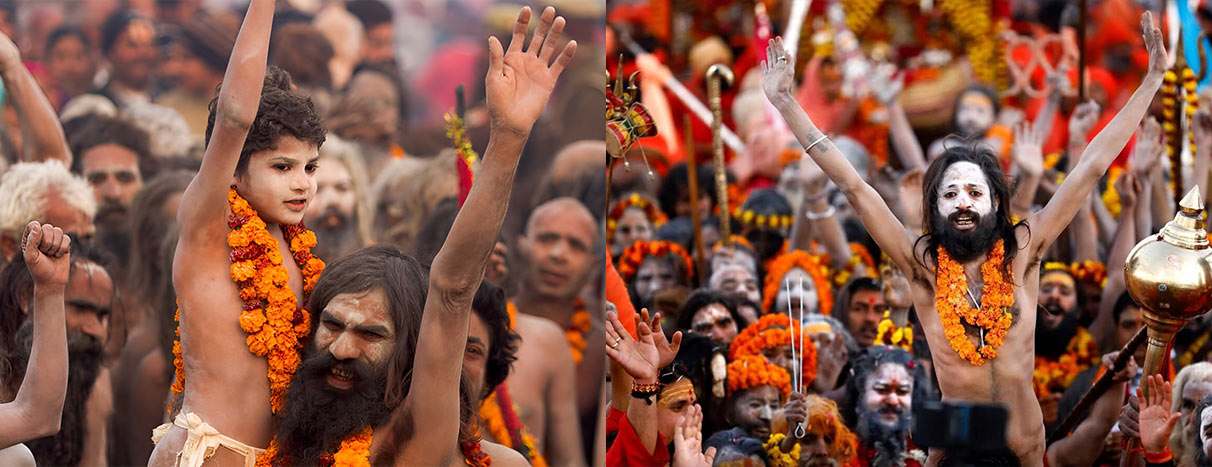

The spiritual, mesmerising and epiphanic value of Kumbh Mela in India leaves an indelible imprint on the minds of the devout pilgrims. This mass Hindu Pilgrimage is revered as one of the largest peaceful gatherings in the entire world. The term 'Kumbh' is derived from a Sanskrit word meaning 'pitcher.' It also refers to the zodiac sign of Aquarius. While, the term 'Mela' means 'gathering.' This tradition is so ancient and sacred, that it was even included in the travel accounts of Chinese traveller Hsuan Tsang, when he visited India in 629-645 BCE.
The origin of this auspicious gathering dates back to the presence of Gods and Demons on earth. According to Hindu Mythology, when all Gods and Goddesses became weak due to a herculean curse, then Lord God Brahma, the creator of this Universe, suggested them to churn the Milky Ocean for Amrita(nectar of immortality).
It is believed that the 'Amrita' was the nectar of immortality. Therefore, untiring efforts had been made by Gods and Asuras (demons) to obtain the same. They started churning the ocean and this significant event is known as 'Samudramanthan'. It started with the Mandara mountain as the churning rod and Vasuki, a kind of serpent as the rope. After churning the ocean for around 1,000 years, Dhanwantari, the divine healer appeared with holding a Kumbh (Pitcher).
This largest spiritual and religious gathering in the world has a lot of significance. It is believed that once every 12 years, when the Maha Kumbha Mela is observed, the sacred river itself transforms into sanctity spots, holding the primordial nectar. The pilgrims get to wash their sins, rejuvenate their lives and taste salvation.
Kumbh Mela is celebrated only 4 times in every 12 years. The religious celebration site keeps rotating in between four pilgrimages. These respective pilgrimages are located on the banks of the most sacred rivers of Hinduism
The ritual bath for cleansing one's soul is the most important aspect of rituals in Kumbh Mela. The devout Hindus believe that taking a dip in the sacred river on the most auspicious day of the new moon will forgive their sins, thereby terminating the cycle of birth and death. Right from 3 o' clock in the morning, the pilgrims start assembling in lines
The other rituals include devotional singing, religious assemblies, mass-feeding and debates on religious doctrines. The order of entering into the sacred river is already fixed. The Naga Sadhus ( who do not wear cloth, their forehead is smeared with ash and they are not affected by material possessions) enter first. They are followed by Urdhwavahurs, Parivajakas and Shirshasins.